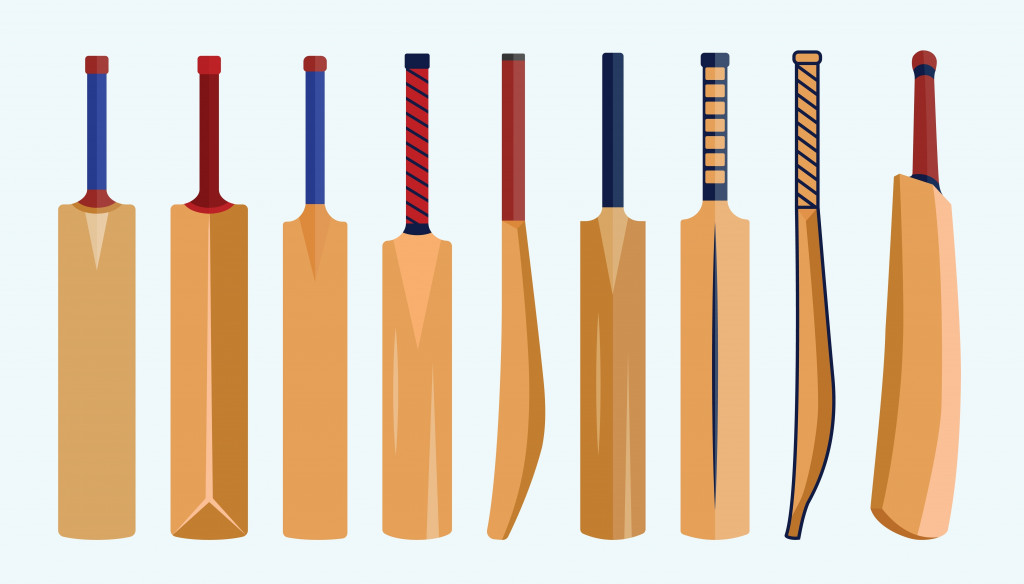Table of Contents (click to expand)
There is no particular weight of a cricket bat that is ideal for all players. Whichever weight allows the player to generate maximum force is ideal for that particular player.
Cricket bats can vary greatly in weight, and it has been observed throughout history that the weights of bats chosen by cricketers hasn’t converged to a uniform value and neither type of bats have proven to be universally better.
So why is there no “ideal” type of cricket bat, and is there any scientific reason behind it?
Let’s try and figure it out!

Understanding The Science Behind Hitting A Cricket Ball
All of us enjoy superlative-laden commentary when a batsman is hitting the ball around the ground and scoring at a brisk pace, but let’s put on our science hats and try to decode the art of batting.
The act of hitting a ball with a bat can be understood in a broad sense using Newtonian mechanics. First, let’s revisit the concept of momentum.

Momentum is essentially a measure of movement. In the image, when we release the ball, it moves down with a certain “momentum” and upon colliding with the next ball, it transfers this “momentum” to the ball with which it collided. Mathematically, we define momentum as the product of an object’s mass and its velocity.

Where P = momentum
m = mass
v = velocity
Let’s try for a more intuitive understanding behind this equation. A car and a truck are moving at the same speed, but since the truck is much heavier, it will be harder to stop it by applying external force. Similarly, if there are two trucks, the one going at a faster pace will be tougher to stop. In both the cases, the object with more momentum is tougher to stop.
Thus, momentum can be thought of as an inherent measure of movement. An object that’s not moving at all has no momentum; the same can be understood from the equation above. Since the velocity will be 0, the momentum would also be 0.
Also Read: How Has Technology Changed The Game Of Cricket?
Newton’s Second Law Of Motion
Newton’s second law of motion states that the rate of change of linear momentum of a body is directly proportional to the external force applied on the body, and that this change always takes place in the direction of the force applied. The external force applied is the rate of change of momentum.
Thus, when we apply a certain amount of force to an object, we are able to change its momentum. For example, while typing this article, I used my fingers to apply a force to the keys of my keyboard, giving those keys momentum in the downward direction.
Now, let’s try to understand how the momentum changes when a batter hits the ball. The batter applies their muscular force using the bat to strike the ball. This force exerted by the batter gives a certain momentum to the ball, sending it in a different direction with a certain velocity.
The batter uses his muscular force to change the ball’s momentum. Whether a ball travels to the boundary or stops after just a small distance depends on the amount of momentum a batter is able to impart to the ball.
So How Does The Weight Of The Bat Factor In?
Now that we understand that batting is essentially the art of imparting momentum to a ball in a certain direction, we can come back to our original question regarding the weight of the bat.
A batter must be able to impart adequate momentum to the ball to score runs. The force applied is a product of two quantities—mass and acceleration. A lighter bat allows the batter to swing it with more velocity, thereby increasing the acceleration aspect of the equation (since acceleration is the rate of change of velocity), but with less mass, whereas a heavier bat increases the mass aspect of the equation, but reduces the acceleration, as compared to a lighter bat.
This is why there is no universally preferred weight of a cricket bat. A similar case is also observed in baseball, where players often use bats of differing weights.

The study of bat weights has been taken up extensively in the field of baseball, where a bat-choosing machine has been developed to measure bat swing speed in order to recommend an ideal bat weight. Choosing an ideal bat weight has had a great impact on player performance.
Also Read: Science Of Swing (And Reverse Swing): How Do Bowlers Swing The Ball In Mid-Air?
Conclusion
Using the concept of changing momentum, we have deciphered that there is no single correct or “better” weight for a cricket bat for peak performance. While people often choose a bat of a particular weight by checking how it “feels,” they are essentially choosing the weight that allows them to maximize their imparted momentum.
So, the next time you are in the market for a new cricket bat, remember to buy one that maximizes the force you can apply whenever you take a swing!
How well do you understand the article above!

